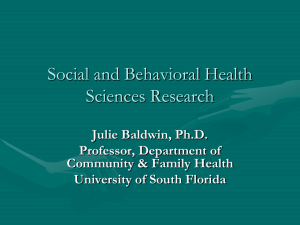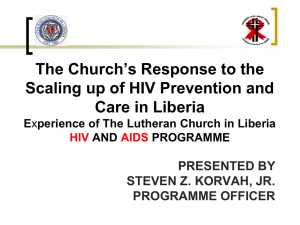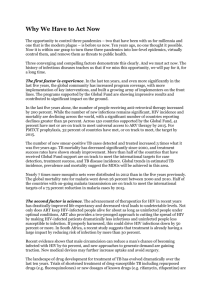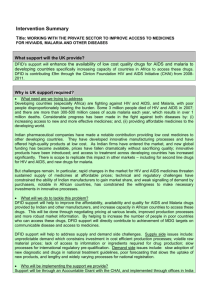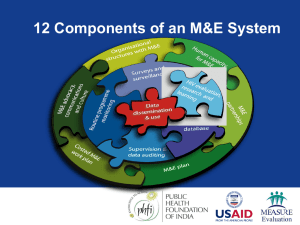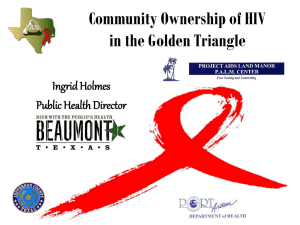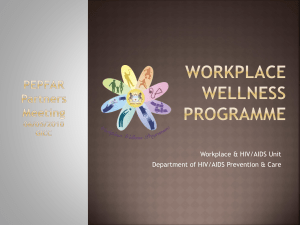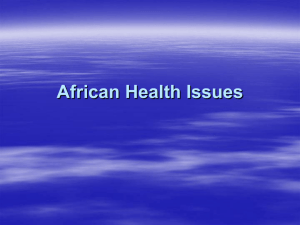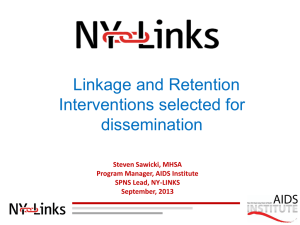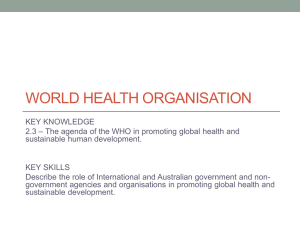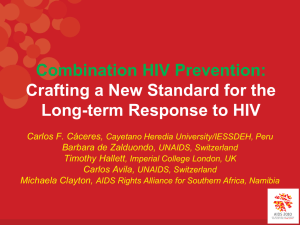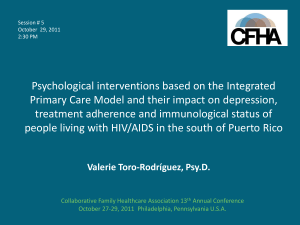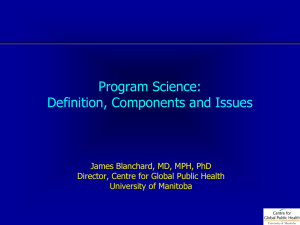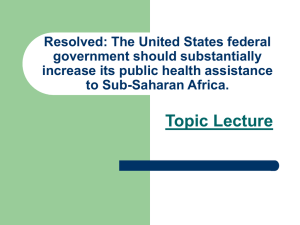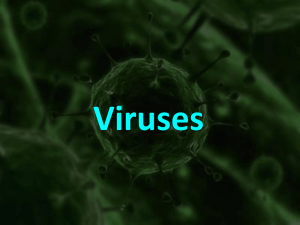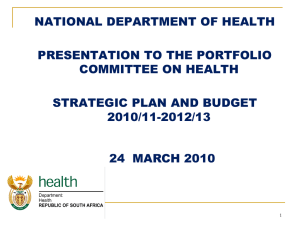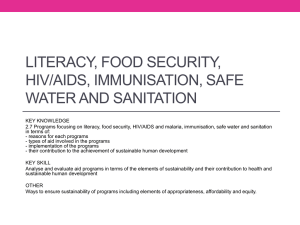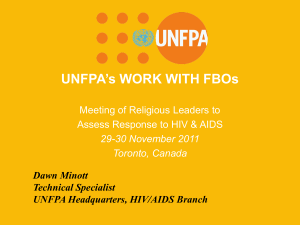Public Health Challenges – McDonnell Sciences Academy
advertisement
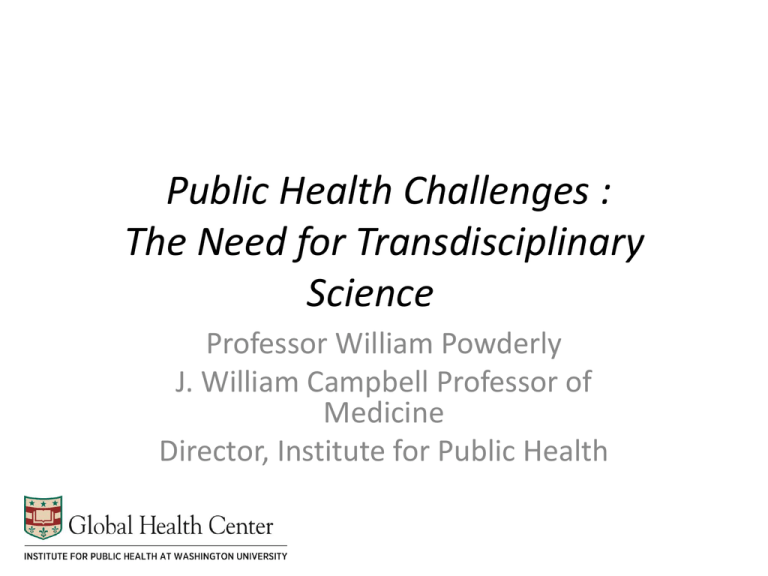
Public Health Challenges : The Need for Transdisciplinary Science Professor William Powderly J. William Campbell Professor of Medicine Director, Institute for Public Health • Global health problems are complex and systemic. • The gross inequalities in health that we see within and between countries present a challenge to the world. – The conditions in which people are born, grow, live, work and age are at the root of much of these inequalities in health, and these social determinants are relevant to infectious and non-communicable diseases alike. • Their resolution requires partnerships transcending the boundaries between disciplines. Millennium Development Goals 1. Eradicate extreme poverty and hunger 2. Achieve universal primary education 3. Promote gender equality and empower women 4. Reduce child mortality 5. Improve maternal health 6. Combat HIV/AIDS, malaria and other diseases 7. Ensure environmental sustainability 8. Global partnership for development Millennium Development Goals 1. Eradicate extreme poverty and hunger 2. Achieve universal primary education 3. Promote gender equality and empower women 4. Reduce child mortality 5. Improve maternal health 6. Combat HIV/AIDS, malaria and other diseases 7. Ensure environmental sustainability 8. Global partnership for development Millennium Development Goals 1. Eradicate extreme poverty and hunger 2. Achieve universal primary education 3. Promote gender equality and empower women 4. Reduce child mortality 5. Improve maternal health 6. Combat HIV/AIDS, malaria and other diseases 7. Ensure environmental sustainability 8. Global partnership for development Globalization of Health Challenges • During the last two decades there has been a fundamental shift in global patterns of disease. • New epidemics of chronic illness are following in the wake of rapid urbanization and economic change. • The epidemiological profile of many LMICs is becoming similar to that in developed nations. Main cause of premature death – worldwide. 1990-2010. 1990 2010 1 Lower Respiratory infections 1 Ischemic Heart Disease 2 Diarrhea 2 Lower Respiratory infections 3 Preterm Birth complications 3 Stroke 4 Ischemic Heart Disease 4 Diarrhea 5 Stroke 5 Malaria 6 Malaria 6 HIV/AIDS 7 COPD 7 Preterm Birth complications 8 Protein-energy Malnutrition 8 Road Injury 9 Tuberculosis 9 COPD 10 Neonatal encephalopathy 10 Neonatal encephalopathy Source: The Lancet 2012; 380:2095-2128 Global Challenges • Challenges are interdependent: an improvement in one makes it easier to address others; deterioration in one makes it harder to address others. • Challenges are transnational in nature and transinstitutional in solution. – Cannot be addressed by any government or institution acting alone. – Need collaborative action among governments, international organizations, corporations, universities, NGOs, and creative individuals. Global Influences on Health Demographic and Health Social Changes Environmental and Climate changes Adapted from McMichael AJ. N Engl J Med 2013;368:1335-1343 Economic changes Demographic and Social changes that influence health Demographic Changes • Population Growth • Aging • Urbanization • Increased Mobility • Family Structure Social Changes • Governance • Institutions • International codes, treaties and relationships • Cultural change and diffusion Global economic influences on health • • • • • • Trade and Capital Mobility Labor conditions Wealth creation Wealth distribution International financial stability International Aid Environmental influences on Health • Land and water resources – Use, degradation and depletion • Energy security and use • Ecosystem disturbances • Climate change – Extreme weather conditions – Warming Global Influences on Health Demographic and Health Social Changes Environmental and Climate changes Adapted from McMichael AJ. N Engl J Med 2013;368:1335-1343 Economic changes Initial Reports of HIV AIDS • June 5, 1981: 5 cases of PCP in gay men from UCLA (MMWR) Gottlieb MS NEJM 2001;344:1788-91 Emergence of HIV-AIDS Urbanization Increased Population Density AIDS War Mobile populations Behavioral changes Transfer of virus from Chimpanzee and Monkey Spatial dynamics of HIV-1 group M spread Faria et al, Science 346: 56. 2014 Adults and children estimated to be living with HIV2013 Eastern Europe & Central Asia North America and Western and Central Europe 2.3 million 1.1 million [980 000– 1.3 million] [2.0 million – 3.0 million] Middle East & North Africa Caribbean 230 000 [160 000 – 330 000] 250 000 [230 000 – 280 000] Latin America 1.6 million [1.4 million – 2.1 million] Sub-Saharan Africa 24.7 million [23.5 million – 26.1 million] Total: 35.0 million [33.2 million – 37.2 million] Source: UNAIDS Asia and the Pacific 4.8 million [4.1 million – 5.5 million] Current State of HIV control Marginalization of key populations Adherence to treatment and prevention International Aid HIV control Health priorities of individual countries Discriminatory Legislation • 34 million infected people (only 24% on Rx) - 2.5 million newly infected each year • Marginalization of many populations – women and children, MSM, Drug-users, Mentally ill • Financial cost – donor fatigue • Lack of Adherence and behavioral disinhibition obstacles to sustained effectiveness of proven interventions • NEED Vaccine and Cure “As the HIV disease pandemic surely should have taught us, in the context of infectious diseases, there is nowhere in the world from which we are remote and no one from whom we are disconnected.” IOM, 1992 Factors involved in the emergence of new infections – especially viral • Microbial adaptation and change. – – • Changing ecosystems. – • Mutations or recombination events in pre-existing viruses. Inter-species transmission (zoonoses) Climate and weather. Human demographics and behaviour. – – – – War and famine. International travel and commerce. Breakdown of public health measures. Adoption of exotic animals. Interdependence: The Shrinking World • 1 billion people cross international borders each year or 25/second – unprecedented vulnerability – Threats spread faster, further, and non-linear • Increased threats of global pandemics – Significant risk in resource-poor countries with under funded public and animal health systems – “If the forest is dry enough and dense enough…” Emergence of Ebola in West Africa -2014 Recent Wars/ Conflict Distrust in Public Institutions Behavioral/cultural issues enhancing transmission Ebola Virus Disease Poorly Functioning Public health infrastructure International Indifference Increased urbanization Population mobility Inter-species transmission (fruit bats) Transmission of Ebola • Individuals are only infectious if they have symptoms of Ebola. – No risk of transmission from people who have been exposed to the virus but are not yet symptomatic. • Ebola is spreads through direct contact with bodily fluids. – In the current outbreak, most new cases are occurring among people who have been taking care of sick relatives or who have prepared an infected body for burial. – Health care workers are at high risk • Need personal protective equipment (PPE) and training to use and decontaminate it. • The virus can survive on heavily contaminated surfaces, – objects contaminated with bodily fluids, e.g., latex glove or a hypodermic needle, may spread the disease. CDC Modelling of Epidemic 1,000,000 Best-case scenario 11,000-27,000 cases through Jan. 20 Worst-case scenario 537,000-1.4 million cases through Jan. 20 0 Sept Oct Nov Dec Jan Sept Oct Nov Dec Jan Ebola – a Global Crisis needing a global largescale, coordinated humanitarian, social, public health, and medical response • • • • Public Health Medical Science Classic public health measures (case identification, contact tracing and isolation). Safe and effective interventions including behavioral changes, developed in collaboration with the affected communities. Appreciation of the culture of the societies in the affected countries, and redevelopment of local trust in governance. Coordination and real-time, open sharing of information across diverse disciplines and with all the players involved. • Development of diagnostic tools, therapies, and vaccines. • Performance of clinical research in the midst of care. • Development of an accepted, ethical mechanism for accelerating development and testing such interventions in epidemic situations. Adapted from Farrar and Piot, NEJM 2014 HIV, SARS, H5N1, MERS, Ebola, ………What next? • Global vulnerability remains – Microbial evolution – Opportunities for exposure – Human behaviors • Most countries lack adequate public health infrastructure to cope • Transdisciplinary science explains but can it anticipate? – Better models of prediction – Better tools for surveillance – Better modes of response • Critical role for education – Future leaders – Current public Global Challenges – how to respond The critical aspects of global health – interaction with policymakers and professionals in countries at varying stages of development, – policy development by national and international organizations, – questions of funding and prioritization, – the social determinants of health, – education, governance and capacity-building, all take place within a complex political, moral and philosophical environment. What can Research Universities do? • “………..complex political, moral and philosophical environment”. • Foster collaboration between academics at their own institutions, among them biomedical scientists, social scientists, engineers, epidemiologists, anthropologists, economists, psychologists, political scientists and historians. – Innovative research – Transformative education What can Research Universities do? • Develop cross-national collaborations addressing the major global challenges – Manage creatively the tension created by individual/institutional recognition • Develop sustainable public/private partnerships focused on applying innovative technologies What Can Research Universities do? • Develop ethically strong collaborations with centers in LMICs – Develop capacity to allow them to identify leadership, and research/educational capability – Promote opportunities for short-term and longterm training – Provide equity in relationships – Understand and develop innovative approaches to brain drain What Can Research Universities do? • Provide leadership in their own communities – Tackle the local dimensions of global problems • Public health, social determinants of disease, food security and food quality; waste, water and air quality. – Educate • Students, faculty, public Delivering effective Health interventions over a life course Health System designed to deliver effective clinical and public health interventions Counselling and Education Protective Clinical Interventions Interventions - Diet and exercise - New therapies - Vaccinations - Dissemination and implementation - Micronutient supplementation - Smoking cessation - Bednets Based on Frieden TR. Am J Public Health 2010; 100:590 Enabling Environment - Legislation for safe driving - Smoking restriction - Public health Infrastructure Socioeconomic Interventions - Decrease poverty - Employment
